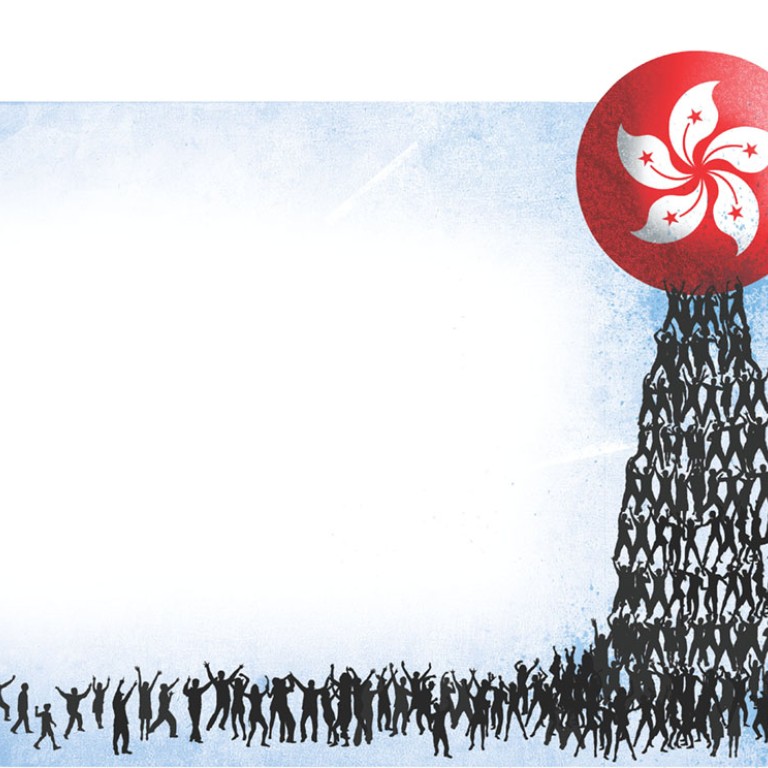
Hong Kong: one city, two narratives
The chasm between pan-democrats' bottom-up view for HK society and the establishment's blinkered vision provides fertile ground for conflict
The pan-democrats are a heterogeneous group that shares a common "bottom-up narrative" of "one country, two systems". This narrative anchors political decision-making in the people and no one else, and it is influenced by three things: (1) democratic ideals, (2) championing the underprivileged and disadvantaged, and (3) defending civil liberties against Beijing.
The democratic ideals are rooted in the theory that political liberty is the foundation of the rule of law and other economic and civil liberties. Adherents regard a diversity of minority interests as the pluralistic foundation of a democratic polity, and majority rule as the democratic expression of society's preferences and its general will.
However, such a system can be held hostage to all kinds of vested interests, which is why the "establishment narrative" regards it suspiciously. It fears both the tyranny of the majority and the tyranny of the minorities, and surmises that since Hong Kong developed a robust rule of law and economic and civil liberties without political liberty under British rule, why change the game?
The second influence on the bottom-up narrative has its roots in the democratic movement of the 1980s. Many leaders of this movement were drawn from non-government organisations, in particular the professional and labour unions and social service advocates and providers, who shared two common characteristics: (1) they did not belong to the circle of Beijing sympathisers, and (2) their main, non-political work involved pressuring or lobbying government for resource transfers and favourable regulatory treatment.
These leaders championed the underprivileged and disadvantaged, and seldom challenged the existing political arrangements. Instead, they served as watchdogs and critics of government actions and policies. They could not share in political power under British rule, but as 1997 loomed on the horizon, they saw an opportunity for this to change with the promise of greater democracy. This bloc began to evolve into an opposition coalition focused on labour and social issues.
The business and professional elite naturally feared that this group would advocate big social welfare spending and threaten Hong Kong's limited government and free enterprise system. The Basic Law, which promised democracy, did not resolve the conflict between these two narratives, which has intensified today.
Aggravating this conflict has been Hong Kong's massive economic transformation, from a manufacturing centre to a service economy, over the past two decades. The initial benefits of free and unfettered markets turned increasingly unequal in distribution as inflation, unemployment (during the Asian financial crisis), and escalating property prices took their toll.
The middle-class in particular pondered what was happening to their society, although they remained attached to a capitalist "can-do" spirit and worried about divisive politics.
Those in the middle are left pondering which side they will be pushed to join
This brings me to the third influence on the bottom-up narrative, the huge windfall reaped by the democratic movement after the June 4 crackdown. One million people poured into Hong Kong's streets in solidarity with the students at Tiananmen Square. In the years since, whenever Beijing restricted civil liberties, political support for a democratic movement in Hong Kong gained ground.
This came at a price. The democrats found it difficult to have a dialogue with Beijing to seek financial support and even to sustain public support in the absence of fresh restrictions on civil liberties, although there is now new-found support from youths and the Occupy movement.
Its opposition to Beijing also probably drew Beijing and the establishment closer together against their common challenge. In contrast, the democratic camp became more fragmented as it has made less headway in the legislature and turned increasingly into a street protest movement. Radical elements have been much more willing to use disruptive and non-cooperative measures to mobilise popular support.
All of this helps to explain the divide in Hong Kong today. The democratic coalition has developed into an opposition group that constantly tests the boundaries of political engagement in Hong Kong and with Beijing, while the local establishment has failed to gain sufficient acceptance within society even though it has prevailed over many major policy decisions since 1997.
The current predicament is the result of the failure to articulate a single political narrative for Hong Kong when 1997 arrived. Something critical is missing in the "establishment narrative" - those elements raised by the "bottom-up narrative" that the public care about. As the two competing narratives remain divided, it has become more difficult to resolve society's political conflicts. Those in the middle are left pondering which side they will be pushed to join - remaining silent is becoming impossible.

